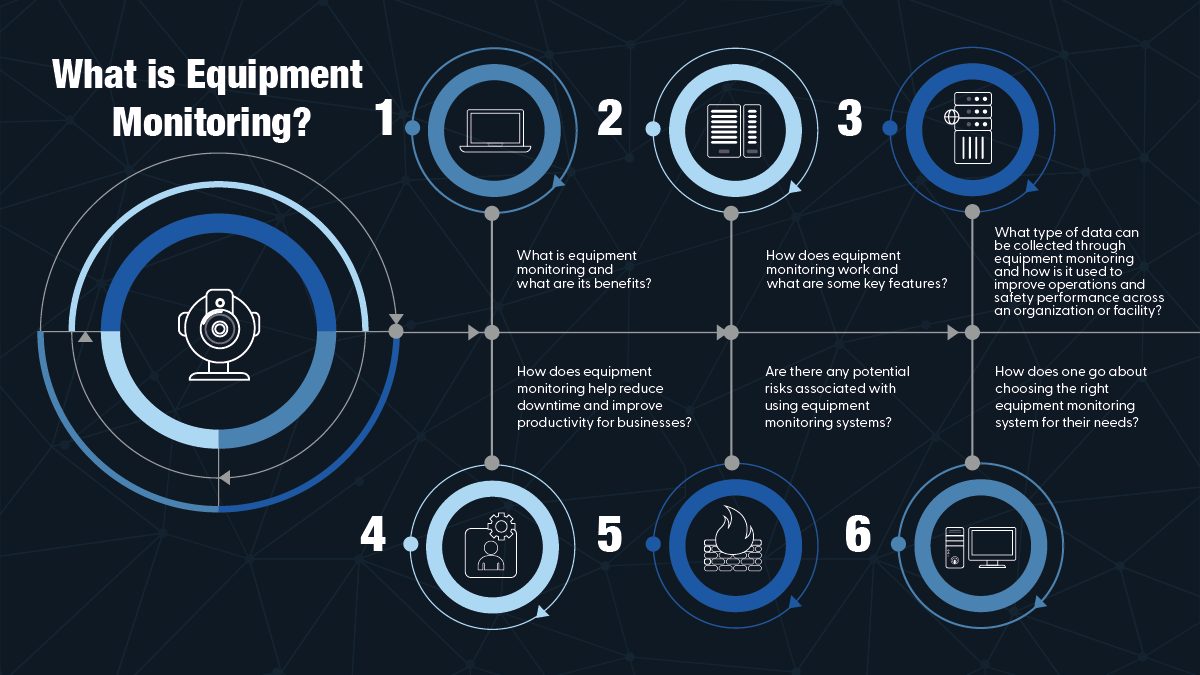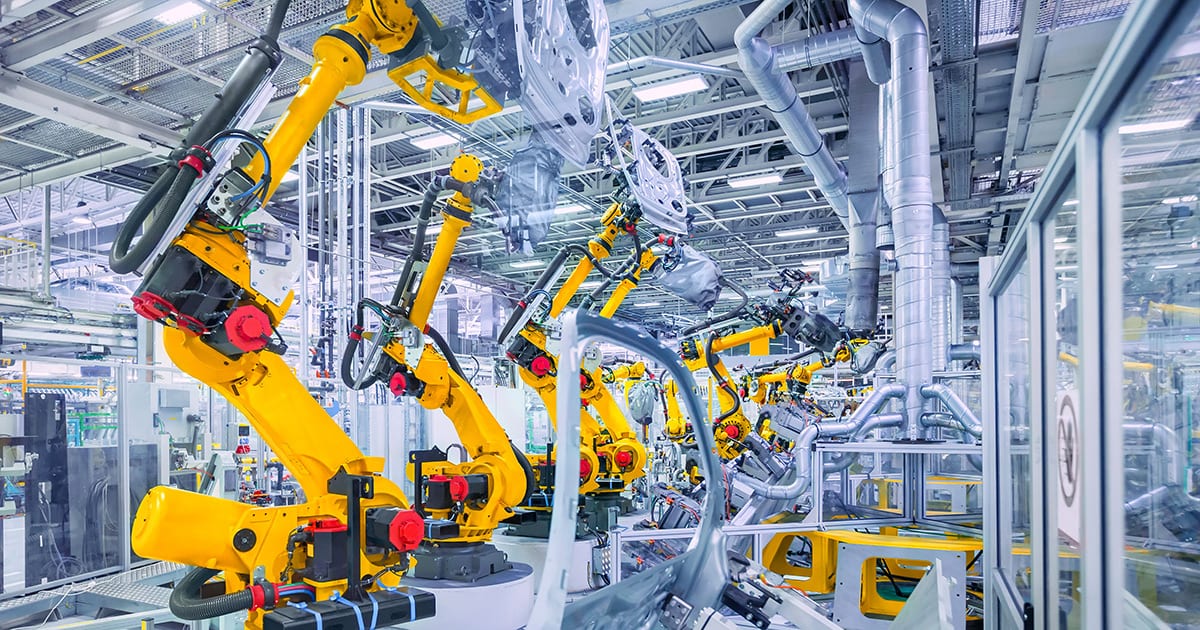What is equipment monitoring and what are its benefits?
Equipment monitoring is a process performed by a system that tracks the performance of your equipment. This system will collect data on how your equipment is running and keep track of your equipment’s status. You’ll be able to use this data to understand better how your equipment is functioning, allowing you to find ways to improve equipment performance.

The following are a few of the many benefits that come with equipment monitoring:
Improve Safety
Equipment monitoring can improve safety in two ways. First, it can ensure that any issues that arise are immediately identified and that you can take care of them before they cause any harm to the people working with your equipment. Second, it can provide routine maintenance checks so that your technicians don’t need to put themselves at risk checking equipment themselves.
Increase Performance
Equipment maintenance allows you to ensure that your equipment is always running efficiently. Every piece of your equipment will be maximally used and guaranteed to run smoothly. It also helps you cut down on wasted time investigating issues that arise because you will already have an understanding of what went wrong through the data provided by your equipment maintenance systems.
Alerts
Through equipment maintenance systems, you can set up alerts for the equipment to communicate with you, your employees, or whoever is in the building if something is wrong. These alerts help everyone working with and around your equipment to remain safe. They also ensure that anything that goes wrong can be handled immediately instead of lying in wait to be discovered.
How does equipment monitoring work and what are some key features?
Equipment monitoring is made up of a series of operations that work together to keep track of your equipment’s performance. An entire system is created using sensors, connectivity methods, and data processing to ensure safety and productivity. What exactly your equipment monitoring machinery is capable of doing will depend on what key features it has.
Program Management
One important feature of equipment monitoring machinery is program management. This feature allows the user to organize multiple programs on equipment and easily navigate through them. It makes it easier to view files and program history and make changes to the program settings.
Malfunction Monitoring and Diagnostics
By installing sensors specifically designed to monitor the physical functions of equipment, you’ll be able to keep track of things like temperatures or vibrations to ensure that your equipment is running within safe parameters. These sensors also allow a diagnosis of what went wrong in the equipment to cause whatever the monitoring system has sensed malfunctions.
Production Control
This feature of equipment monitoring allows you to track production variables like energy costs, employee performance, and common malfunctions. By doing so, you can better understand where money and time are being wasted and what needs to be fixed in order to improve productivity.
What type of data can be collected through equipment monitoring and how is it used to improve operations and safety performance across an organization or facility?
Through equipment monitoring, you can collect valuable data that will improve your operations and maintain the safety of your equipment and employees. The following are the different types of data you can expect to find through your equipment monitoring:
History
Through equipment monitoring, you’ll be able to create an archive of data that you can later use to analyze and find patterns regarding things like productivity and safety.
Downtime
Equipment monitoring systems can track when the equipment is in uptime and when it’s in downtime. It can also help you identify what pushes the equipment into downtime and what can be changed to increase uptime.
Real-time
This type of data differs from other types because it allows you to see how the equipment is functioning at the moment instead of providing you with a history or trends that you can examine. This type of data helps you make immediate decisions regarding operations.
How does equipment monitoring help reduce downtime and improve productivity for businesses?
Equipment monitoring can reduce downtime by making it easy to view current productivity levels so you can act in the moment to improve them. It also makes it so data is collected that you can analyze, helping you identify trends for which you can find solutions to improve productivity. Another way to save time and improve productivity through equipment monitoring is that equipment monitoring systems can save employees time by conducting equipment maintenance and checks so that they don’t have to.
Are there any potential risks associated with using equipment monitoring systems?
Though there aren’t necessarily any risks, equipment monitoring has a few downsides.
One of the major downsides is the need to have someone who can understand the data collected through monitoring. Equipment monitoring systems can provide you with a great amount of valuable data, but if no one in your company understands this data, it’s worthless.
Another downside of equipment monitoring is the cost. Not only will you need to spend money on the sensors and machinery, but you’ll also need to hire technicians to install and maintain them. You may also need to hire someone to handle the data generated through the monitoring.
How does one go about choosing the right equipment monitoring system for their needs?
There are many important factors you’ll want to consider when choosing the right equipment monitoring system. First, you’ll need to identify your needs and then examine the options out there to see what works best for you. A few factors to pay particular attention to are the following:
Compatibility
The last thing you want is to spend money on a monitoring system that won’t work well with the equipment you need to have monitored. Some systems will work better with your existing equipment than others. It’s vital that you do your research and make sure that the monitoring system you buy is compatible with the equipment you’re hoping to monitor.
Size
You’ll want to ensure that the size of your monitoring system will work with your equipment. This means both the physical size as well as the digital size. Sensors and other monitoring equipment need to fit properly in order to work the way they need to. You’ll also need to ensure that the systems won’t overload the equipment due to too much power.
Data Collection
As data collection is one of the most important things that a monitoring system can do, it’s important that the system collects the type of data that you need. For example, if you’re more interested in productivity, but the system mostly collects data regarding safety, you’ll be disappointed. You’ll also want to make sure that the system can collect a large enough amount of data for analysis purposes.


